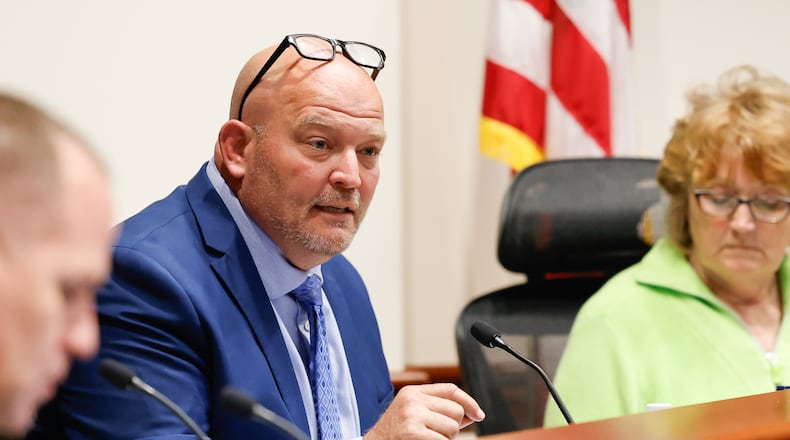“We can’t allow this to happen,” he said, and telling the city residents, “We’re fighting for you, and we’re going to continue to fight until this is taken care of because you matter.”
One property, Spooky Nook, would jump from just more than $8,800 now to nearly $477,500 in 2025. Spooky Nook leaders plan to appeal.
Another property, the Fitton Center for the Arts, is assessed just under $11,600 now and will be assessed just under $31,700 with the changes. Fitton Center leases the land from the Hamilton Community Foundation.
Miami Conservancy District spokesperson Sarah Hippensteel Hall said in response to the council’s harsh criticisms, “We have been meeting with local stakeholders since early 2023. The Miami Conservancy District is committed to the mission of providing unfailing flood protection to protect the safety and well-being of the people and property of the Miami Valley. We have hosted public meetings, made presentations, mailed postcards, mailed letters, built webpages and created additional meeting opportunities. The Miami Conservancy District will review the action taken by the Hamilton City Council, in light of the court order, to proceed.”
The Miami Conservancy District recently announced the new assessments it will levy starting in 2025 on property taxes for those within the agency’s boundaries within five counties and 22 communities along the Great Miami River and its tributaries.
The proposed assessment increase includes a new 1% capital assessment and a 0.59% increase to the 2.19% maintenance assessment. The assessment covers costs related to the upkeep and rehabilitation of the levee and dam system. The district said it has identified about $140 million in short-term and long-term projects needed to ensure levees, dams and channels across the region remain safe and effective. MCD officials have said that aging infrastructure, extreme weather events and increasing rainfall are putting pressure on the regional flood protection system, which has critical maintenance, repair, rehabilitation and reinvestment needs.
There are nearly 5,100 properties protected by the MCD that pay an assessment that was last levied in 2013. Approximately 80% of property owners, MCD officials say, are anticipated to pay less than $250 per year for both the maintenance and capital assessment. But it’s that remaining 20% that will see increases that are five or 10 times the increase, and in the case of Spooky Nook Sports Champion Mill, about 50 times more.
Hamilton City Council is asking for a two-year moratorium on implementing what Councilman Joel Lauer called both a “money grab” by the district and essentially a tax rather than an assessment.
“I am disgusted by the absurd assessment that is being implemented by the Miami Conservancy District,” he said, calling the MCD’s board policy fundamentally questionable. “It is alarming to hear that many of our businesses and citizens within the city will be impacted by this unprecedented, unwarranted and potentially devastating financial burden on our economic growth.”
Ryan said things won’t change unless confronted, and that’s what they did Wednesday night, calling the assessments “unfair and unjust.”
“These assessments will be devastating to our businesses, our residents and our future redevelopment projects. Simply put, no businesses will be coming to Hamilton again if this goes through, and this is completely unacceptable, and I will not stand for it.”
He said MCD “had every opportunity” to be proactive about the process “but they weren’t, including reaching out to the Hamilton City Council before filing them.”
“This entire situation could have been handled better, but it wasn’t,” Ryan said. “It is so infuriating to me that it has now reached this point. MCD should be incentivizing business development in our city, not penalizing them.”
The MCD did have a meeting in late February in Hamilton about the preliminary assessment for 2025, as well as a more detailed discussion last week in Dayton and Troy.
The Miami Conservancy District was created in 1915 as a river management agency following the 1913 flood designed to protect southwest Ohio communities along the Great Miami River and its tributaries from flooding. The flooding of the Great Miami River in March of 1913 devastated communities like Hamilton and Dayton, and the MCD built levees, straightened the river channel throughout the area and built five dry dams on various tributaries to control flooding.
About the Author

